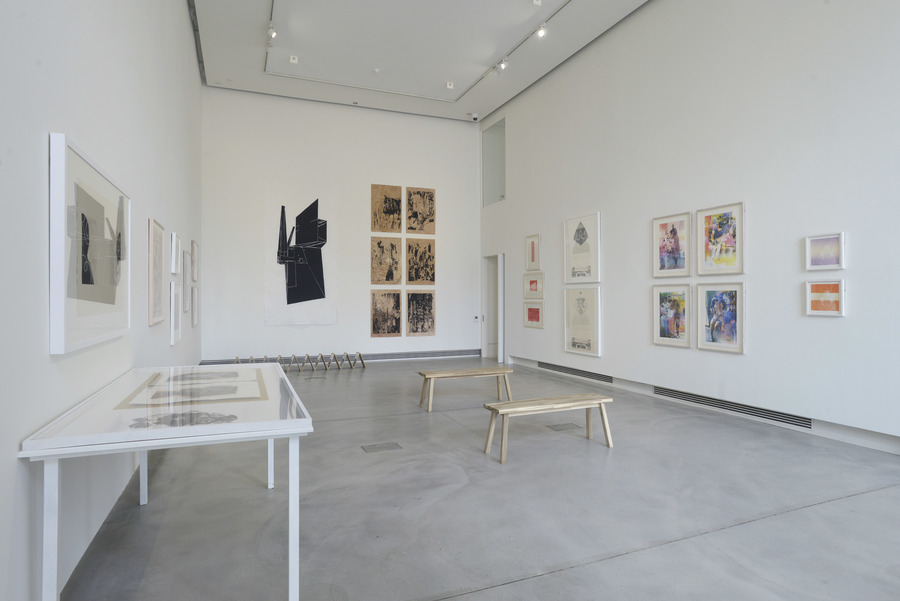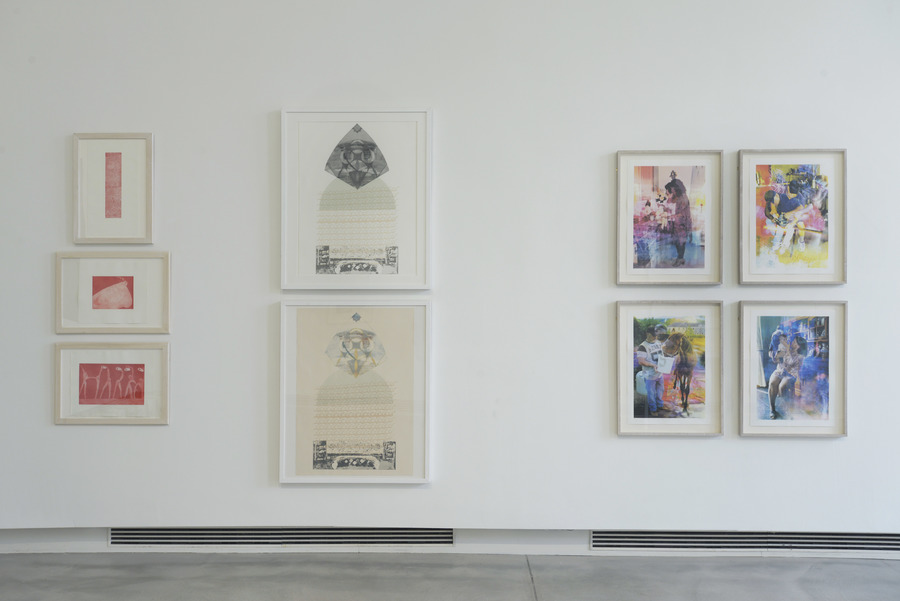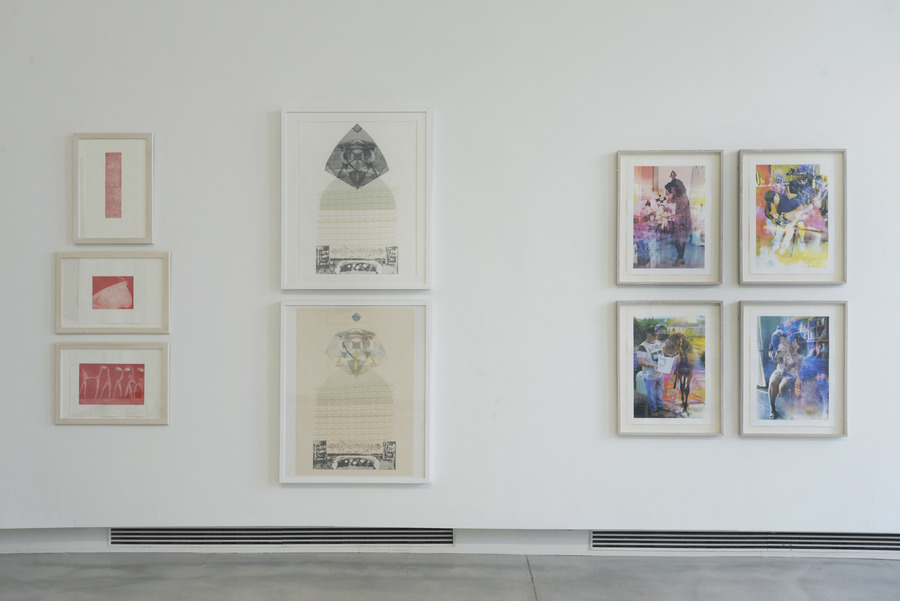Visions of a Life: Uprooted Visions at Edinburgh Printmakers
With the Conservative government’s vicious anti-immigration policies continuing, a new exhibition at Edinburgh Printmakers emphasises the importance of elevating marginalised voices through international collaboration
Uprooted Visions, the latest exhibition taking place across Edinburgh Printmakers' two gallery spaces, is the result of a partnership between five European printmaking studios – in Scotland, Slovenia, Ireland, The Netherlands and Denmark. The show marks the culmination of a series of month-long residency programmes titled Studios of Sanctuary. Many of the artists used the residencies to produce new works reflecting on their experience of global conflicts (including those in Sudan, Syria, Yemen and Ukraine), migration and citizenship. While not all of the artists in the exhibition have lived experience of being refugees and asylum seekers, they all have lived experience of migrating to European countries. While for some of the artists the experience of displacement is very recent, others, such as Azad Karim and Zory Shahrokhi, have been developing their practice in their home countries for decades. The versatility and joy in experimentation with printmaking shines through in this exhibition and the breadth of lived experiences makes for an emotional and reflective viewing experience.
Edinburgh-based Shatha Altowai’s stunningly intricate etchings bear a sense of weight and burden. Titled Monument of Loss, they are blood-red in colour, their abstract figures formed of what appear to be numerical tallies of five that take on the form of surgical stitches. In one print from the series of three she is presenting, six figures contort, bearing the weight of oval forms – the way they are described with the red circle within makes it look like they are holding up babies. The works reflect on the ongoing civil war in Yemen, in which over 11,000 children have died or been left with serious injuries since 2015. The three works reflect on the loss of a child and the burden parents face in times of tumult and violence of conflict.
Like Altowai, Arafa and the Dirars' richly textured screen and block-printed Our Scar also focuses on the horrors of conflict endured by the vulnerable, graphically depicting the influence of war on the human psyche. Their figures look out from the mise-en-scene, mournful and desperate, some in tears. Arafa Hassan Gouda heads this Hull-based artist collective, which brings together Arafa and her four children – Mayas, Ethar, Waieel and Akram Dirar. The family developed their skills in drawing, painting and poetry after fleeing the war in Sudan, living in refugee camps in Libya and Egypt before being resettled in the UK.
Meanwhile, Thaís Muniz’s transatlantic visions take the form of five flags, printed subtly on black chiffon, hung against the gallery windows. Titled New Atlantic Triangulations Flag, they are at once delicate and mournful, fluttering ever so slightly, bearing witness to life inside and outside the gallery. Circling them initiates a different visual experience, revealing the shapes of each layer – the inverted triangles represent a desire for a matriarchal, progressive society, while the circles represent Ori (a symbol of inner intuition and strength in Yoruba belief systems). While national flags are purposefully striking and bold, Muniz’s flags are more ambigious, their form shifting depending on the lighting conditions and where the viewer is in the space. These flags represent different (and potentially murky) oceanic and landed territories, reflecting on Muniz’s identity as a Black Brazilian woman of West African descent living in Ireland.
Paria Goodarzi’s beautiful print Measuring the Distance synthesises etching, screenprint and embossing, and is a visual represention of a conversation between the artist and her mother both navigating the path to acquiring British citizenship. The multiple planes of the print, which reveal themselves hesitantly, emulate the elusive and purposefully difficult route to gaining settled status in the UK: a closer look at the work discloses delicately screenprinted extracts from travel documentations, barely visible in the background of the two figures.
Upstairs, in Edinburgh Printmakers’ second gallery space, Aqsa Arif’s folklore-inspired, sculptural work Sohni ki Rath, aur Sohni ka Din (Sohni’s Night and Sohni’s Day) is immediately striking. The ornate and intricate screenprint sits within a colourful charpoy, a woven seat or bed found across South Asia. Inspired by the Pakistani folk stories of The Seven Queens of Sindh, Arif outlines a personal connection to the story of Sohni and Mehar, which tells the story of a woman who traverses a turbulent river each night to be with her lover, defying societal expectations of women. Ceyda Oskay’s installation also moves away from the two-dimensional in their installation. Their screenprinted garments are both hung on the wall and worn by a group of performers, who play an improvised musical set against the backdrop of what appears to be a boatyard. The setting of the boatyard reflects the re-packaging and re-working of motifs, materials and geographies that is so emblematic of Oskay’s practice. In this installation, for instance, her printed garments are embellished with motifs related to Irish history and culture, including Red Stettin wheat, a type of wheat that was gifted to Ireland by Ottoman aid ships during The Great Hunger of 1847.
With the omen of harsher and more extreme legislation as part of the Conservative government's 'hostile environment' policy, Uprooted Visions emphasises the importance of elevating marginalised voices through the power of international collaboration, but also celebrates the endurance of creativity in the face of conflict and displacement.
Uprooted Visions, Edinburgh Printmakers, until 2 Jul, free


